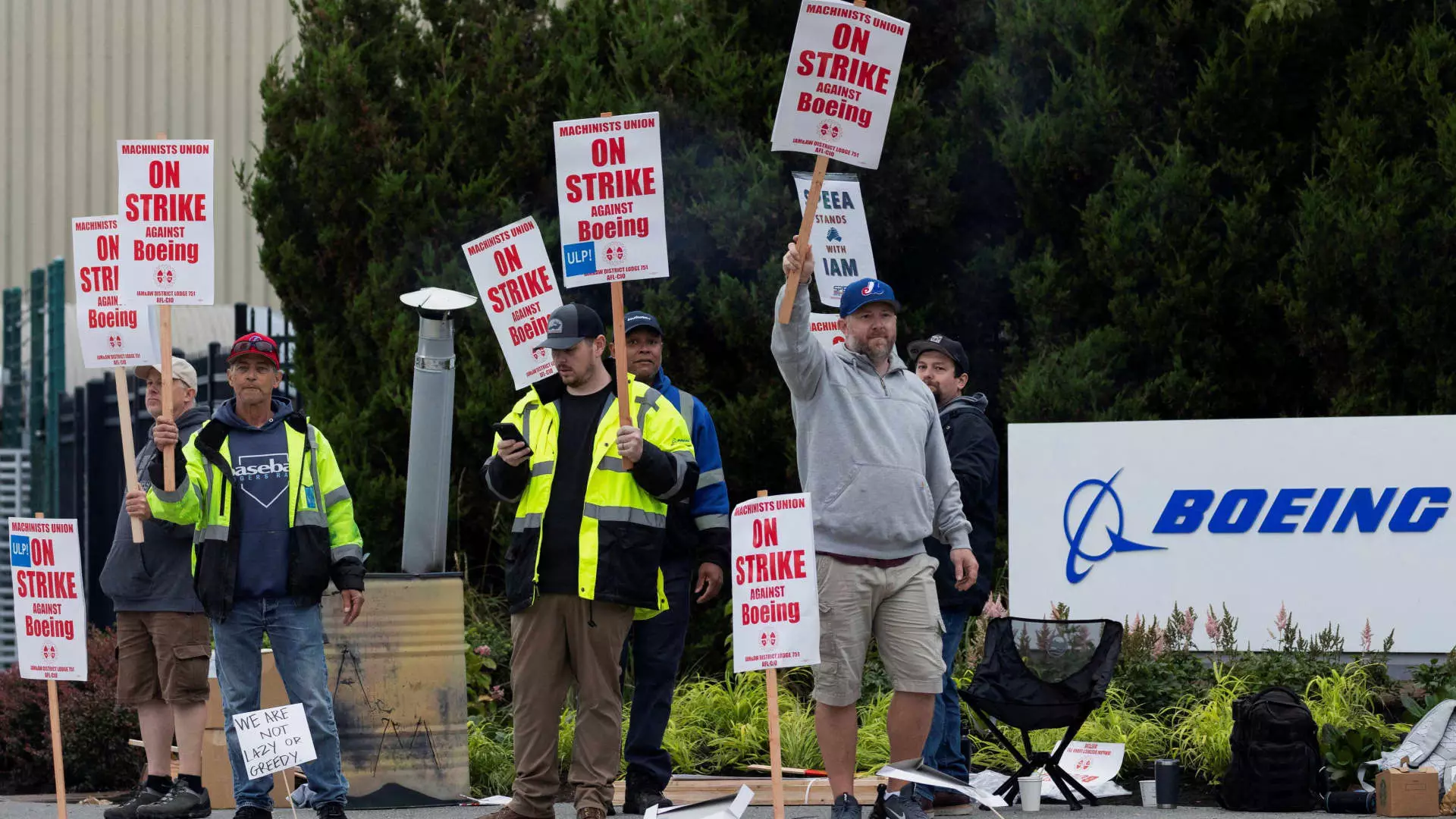The ongoing machinist strike at Boeing, which has now entered its second week, starkly highlights the tension between a major aerospace manufacturer and its workforce. The situation escalated quickly when over 30,000 machinists left their posts in a decisive show of discontent, rejecting a tentative labor deal by a staggering 95%. As they picket outside stringently guarded facilities in Renton, Washington, the workers are not merely opposing management; they are standing against the backdrop of escalating living costs that threaten their livelihoods. The aim is clear: higher wages and better working conditions amidst a tumultuous economic landscape.
Workers have turned to side jobs to cope with the immediate financial strain imposed by the strike. Landscaping, furniture moving, and warehouse labor have become alternatives for those hoping to sustain their families. It is sobering to consider a scenario where dedicated craftsmen—skilled in the intricate assembly of aircraft—find themselves in manual labor fields just to make ends meet. The complexities of this strike go beyond simple wage negotiations; they unravel a wider narrative about labor rights in an unpredictable economy.
Boeing stands on precarious financial ground. With an existing debt of approximately $60 billion that has only burdened the company further, the ongoing strike threatens to escalate costs significantly. Estimates suggest that the strike is causing Boeing approximately $50 million in losses daily. If negotiations fail, ratings agencies have warned of potential downgrades that would compound the company’s challenges by raising borrowing costs even further. Boeing has already suffered severe losses due to previous manufacturing crises, such as the one that followed the catastrophic 737 Max incident earlier this year, leading to financial upheaval and reputational damage.
Boeing’s new CEO Kelly Ortberg has stepped into a leadership role that is fraught with challenges. The company has not posted an annual profit since 2018 and is grappling with a manufacturer’s nightmare that is being accentuated by the current work stoppage. Attempting to restore the firm’s credibility, Ortberg faces immense pressure from union workers, stakeholders, and the national government, especially with the transportation sector taking on heightened importance in the post-pandemic recovery.
As the strike stretches on, the narratives of individual workers underscore the mounting sacrifices being made in the name of economic necessity. Stories of employees forgoing meals out and prepaying mortgages permeate discussions among striking machinists, revealing the lengths they will go to secure a fair wage. Workers continue to express profound pride in their roles while simultaneously acknowledging the crushing weight of the cost of living in Washington state—where median home prices have skyrocketed over 140% in the last decade.
Jake Meyer, a Boeing mechanic, exemplifies the internal conflict many employees face between their craft and the financial burden of living in an expensive area. Meyer’s willingness to deliver food during the strike highlights a painful irony: highly skilled laborers are reduced to taking low-wage gigs merely to survive. Their collective yearning for a pay increase reflects deep-seated frustrations not only with Boeing but the broader economic landscape that seems to continually undermine their stability.
Negotiation sessions between Boeing and the International Association of Machinists and Aerospace Workers exhibit deep frustration on both sides. The union has been vocal about its demands, seeking raises closer to 40%, annual bonuses, and the restoration of long-lost pensions. Boeing’s most recent offer, which included a 25% wage increase over four years, was deemed insufficient by workers who feel the current economic realities demand bolder proposals.
The union’s empowerment in this moment reveals a broader trend of labor movements gaining momentum, emulating recent successful campaigns by various sectors, including airlines and production industries. Federal support from the Biden administration underscores the significance of the strike, emphasizing a balance between the needs of Boeing as a corporation and the rights of its employees. Amid this, Transportation Secretary Pete Buttigieg voiced the importance of reaching a resolution that honors workers’ demands while fostering corporate viability.
Boeing’s challenges are compounded by a tighter labor market. The company’s previous experiences—particularly the muted 2008 strike—don’t apply well to today’s context, in which skilled labor is extremely hard to come by. The pandemic-induced layoffs led to mass exodus of trained workers, and Boeing’s struggle to replenish its workforce adds another layer of complexity to the ongoing strike and its negotiations.
As skilled technical positions in aerospace become increasingly competitive, the necessity for Boeing to attract and maintain talent becomes paramount. The decisions made in these negotiations could permanently alter the workforce dynamics, not just at Boeing but across the industry. In a time when the demand for air travel resumes, striking the balance between employee satisfaction and corporate sustainability is essential for both parties to thrive.
Boeing stands at a critical crossroads; the actions taken in the coming days will heavily influence the company’s financial dynamics and the lives of its employees. The machinist strike embodies a microcosm of broader labor movements seeking fairness and acknowledgment in the face of rising living costs and corporate challenges. The unfolding situation calls into question not just the future of Boeing but the shape of labor relations in modern America. The outcomes from this labor strife will resonate beyond the factory floors of Renton, setting forth implications that could echo through the aerospace sector for years to come.

